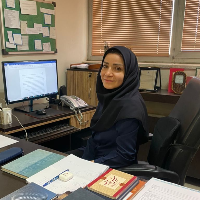Synthesis, Molecular Dynamics Simulation, and In-vitro Antitumor Activity of Quinazoline-2,4,6-triamine Derivatives as Novel EGFR Tyrosine Kinase Inhibitors
Developing a potent and safe scaffold is challenging in anti-cancer drug discovery.
The study focused on developing novel series of compounds based on the inhibition of epidermal growth factor receptor tyrosine kinase (EGFR-TK) as one of the most promising compounds in cancer therapy.
In this study, a novel series of quinazoline-2,4,6-triamine derivatives were designed and synthesized through intramolecular C-H activation reaction of para-nitro aniline, trichloroacetonitrile, and isocyanides employing a one-pot reaction.
The in-vitro antitumor activities of the compounds which showed acceptable inhibitory effects were investigated against breast (MCF-7), lung (A-549), and colon (HT-29) cancer cell lines by employing MTT assay. All compounds had the most negligible cytotoxicity toward normal fibroblast human cell lines. Based on structural and thermodynamics analysis results, it was found that Met 769 is a key residue in interaction with all inhibitors through the formation of hydrogen bonds with high occupancies with the amine group on the quinazoline ring of inhibitors. Also, there was a good consistency between calculated ΔG binding and experimental IC50 values of compounds 10d, 10e, and erlotinib.
Compound 10e had an extensive range of antitumor activity on three diverse cell lines comparable with erlotinib and doxorubicin reference drugs. Also, compound 10d showed selective cytotoxicity against cancerous lung cells (A-549). On the other side, computational studies confirmed that Met 769 is a crucial residue in interaction with all inhibitors.
-
Investigating the inhibitory effect of new imidazole derivatives on cyclooxygenase II enzyme with computational approach
Zeinab Mollaie, Leila Karami*, , Gilda Karimi
Nova Biologica Reperta, -
Novel 2-(Diphenylmethylidene) Malonic Acid Derivatives as Anti-HIV Agents: Molecular Modeling, Synthesis and Biological Evaluation
Mehrnaz Lotfaliei, *, Zahra Hajimahdi, Mohammad Mahboubi Rabbani, Rezvan Zabihollahi, Mohammad Reza Aghasadeghi, Sayyed Abbas Tabatabai
Iranian Journal of Pharmaceutical Research, Winter 2022


